I threw a picnic in our garden the other day. We were busy with all…
Terracotta Rooftop Finials
The first details on a house that shouted at me instantly over here in England were the terracotta rooftop finials, more exactly the gargoyle-look-like dragon figures. At first I did not have a clue what that was and thought it is only the foible of the owner of the house. But as I kept on bumping into more and more rooftop finials and different figures, I realized, it only can be another typically English thing…
But what are these finials and where do they originate from?
As it happens, rooftop finials were widely used all over the world: the Romans used them and they were beloved accessorizes in the Chinese culture and architecture, too. They all were made of clay and terracotta.
The decoration of the ridge of the roof and gables revived in the Victorian times. No wonder, the Victorians loved details no matter what building they built. Rooftop finials were made of terracotta and the most popular shapes were balls and spikes often decorated with leaves and cones, but crosses, clubs and spears were also popular. They wanted to emphasize the gable and the roof with this little detail and the house became perfect in their eyes.
Before 1870s, in the Gothic Revival period the dragon and other figures were preferred to keep the evil spirits away. This custom probably originated in the Chinese belief.
There are many roof finials in Maidenhead and its surroundings (Cookham, Marlow, Henley-on-Thames etc), especially in the form of demons, dragons and swans – mainly made by local builders, J. K. Cooper & Sons in the 19th century.
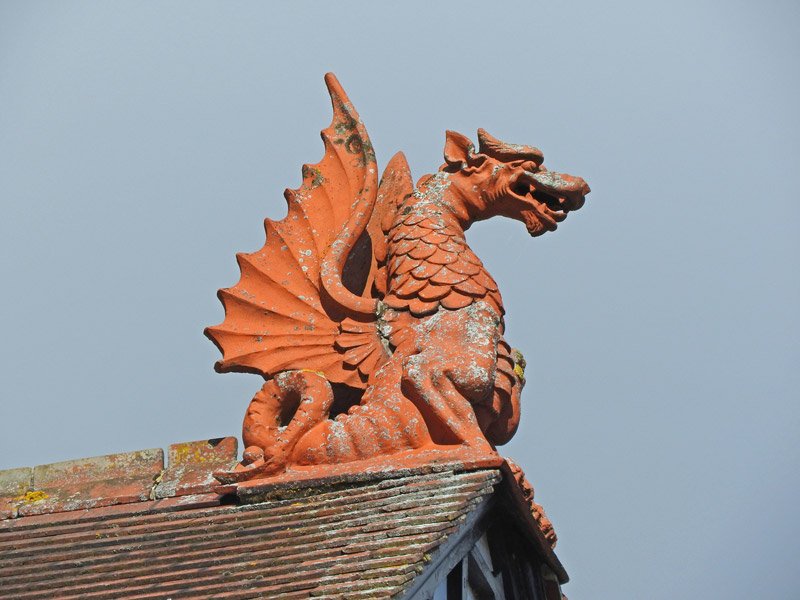

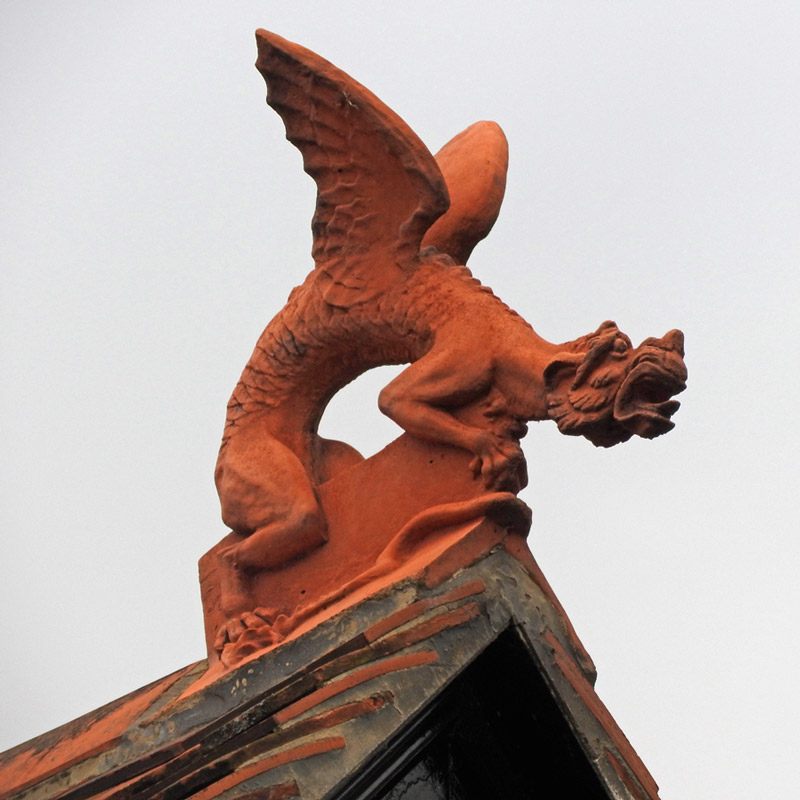
Today’s selection
If you fancy having a finial on your roof, you can select among different ones: round or square shaped base or angled finials to start with, and on top of the standard designs such as ball, spike, cross, cone, leaf, gargoyle, dragon, you could buy an owl, crown or swan neck finial and other quirky designs as well.
It goes without saying that a Victorian roof can be considered perfect only in case the ridge of the roof is decorated appropriately. Therefore, it is not surprising that there is a wide range of ridge tiles available as well. Tiles with one or two holes, clubs shaped holes, or tiles shape of a comb.
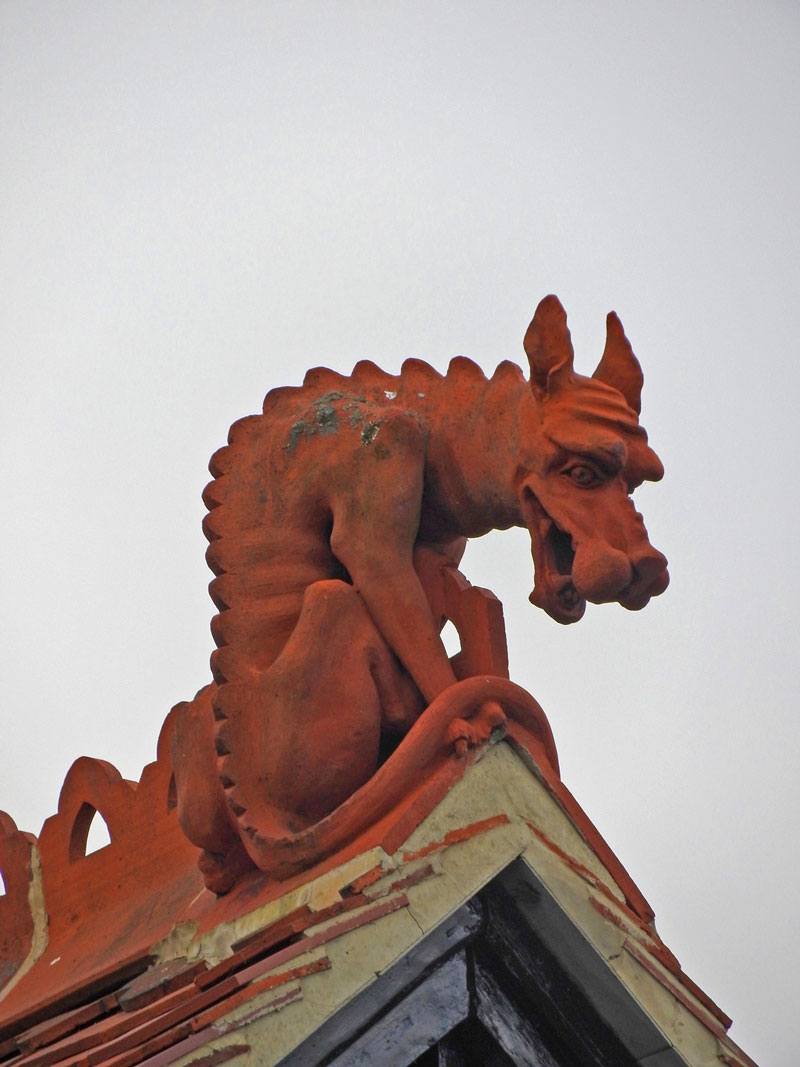
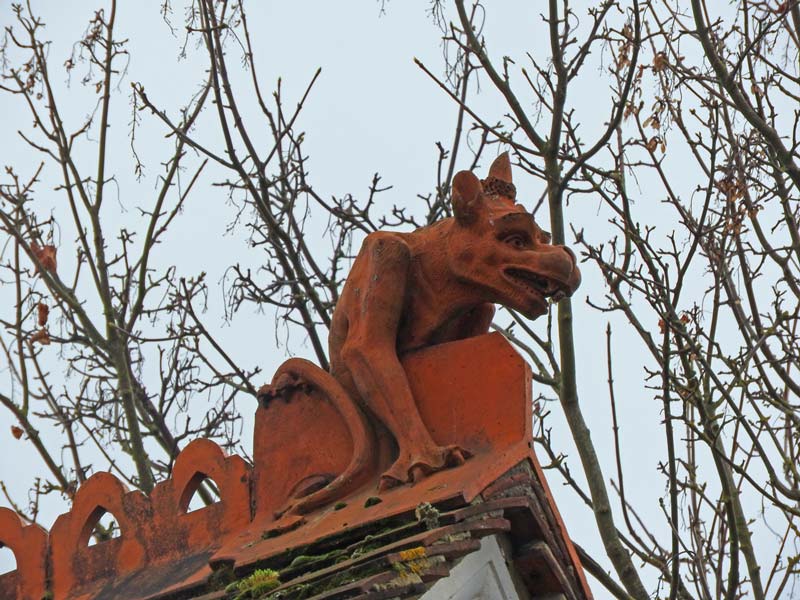
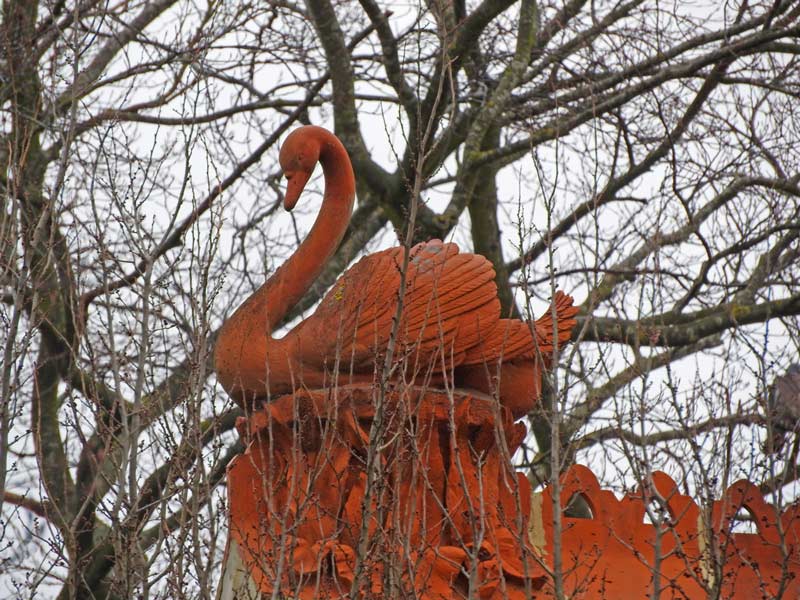
~
The rooftop decoration may appear funny or in some cases too much (especially for a foreigner), but let me say, these tiny details give a special character to English dwellings no matter if it is a charming little cottage in the countryside or a big Victorian town house.




Hi, we really enjoyed reading this excellent blog post and we love the selection of original roof finials featured in the post. It really captures and shows just how skilled the original craftsmen were in creating wonderful roof detail at a time when architectural and intricate detail was in fashion and very popular. Back then there were many tilieries producing fantastic ridge tile and roof finial designs to adorn the buildings and it is always great to see that original examples still exist to appreciate the craftmanship, time and skill that went into producing the original features
We are one of the few companies left that still produces roof finials today. I am pleased to say that we not only repair or produce replicas that feature on grade listed, period, Victorian and Edwardian properties but also produce finials on new builds too which is a great recent trend as it helps to keep an English tradition alive and adds interest and detail to roofs
Hi Jamie, thank you for the lovely feedback. I fully agree, these finials are fantastic and give a nice finish and touch to period properties. If I lived in one, I definitely would want a rooftop finial. Great to know that your company is around and still produces roof finials. Again thank you.
I would like a dragon for my new house, where can I get a catalogue of what is available please?
Dear Gizella,
I am pleased to discover your interest in roof-top decorations. Now living in the wilds of central France, I have become interested in such details, called here epis de faitage or poinçon, evident everywhere from townhouses to chateaux and country cottages. At their inception, they served a specific purpose – that of protecting the join of three or more roof planes. My research here goes very slowly because French is such a difficult language and often people do not respond to my email queries. Within the last eight to ten years, there have been exhibitions at small museums but that was before I moved here and I can’t get any of them to respond to my queries about details, printed or otherwise, from these displays. I have never seen a similar application of these finials when I lived in England. In France, they were certainly utilitarian before they were decorative features. They are now found in various designs and made of metals as well as terra cotta – both glazed and unglazed. At one period, inverted pots were used at the joining points. We had such a pot on our roof before we had it re-done, and sadly, before I had any idea what it was doing up there.
If you would like to start a dialog about these fascinating objects, please respond to my email address above. I am particularly interested in the history and evolution of their designs, and also in the fact that many people who are renovating old properties here are installing them – sometimes in inappropriate places – showing interest in the decoration but not their useful application. I have discovered a couple of French books that look useful, and ordered accordingly. I would really like to find if the English examples were ever used to keep damp from entering roof joins! Does anyone know of any documented history?
Thanks for your attention, and hopeful of a response,
Diana Stone
I moved house to the seaside and on the roof was a dragon. I absolutely love it.